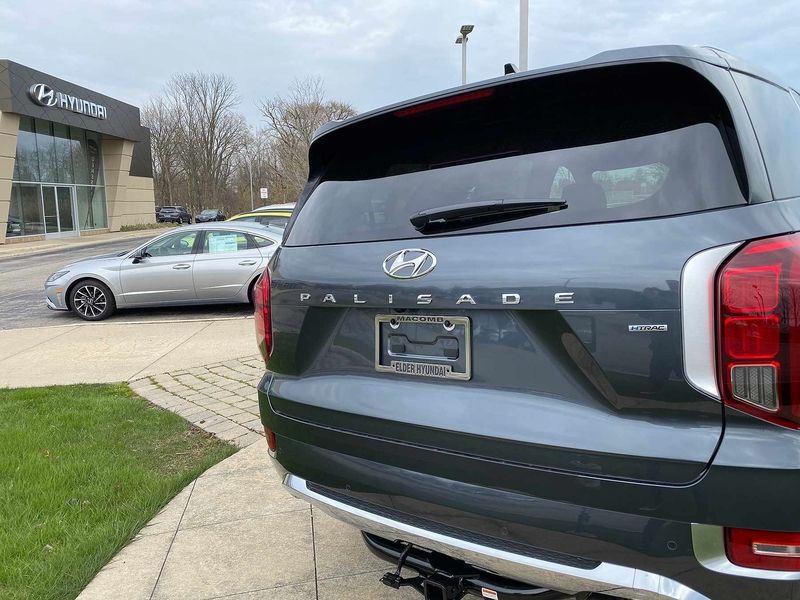
Toyota Motor Corp. and Hyundai posted sharply lower U.S. sales in April, previewing what is expected to be a low point for automakers as the market reels from closed showrooms and government restrictions on household and business activity because of the COVID-19 outbreak.
Volume dropped 54 percent at Toyota Motor, with demand down the same amount at the Toyota division and Lexus. Overall, the automaker’s truck deliveries slid 50 percent and car sales dropped 61 percent — even as the company’s average new-vehicle incentive rose 24 percent to $2,551 last month. (See chart below.)
The Toyota division’s top-selling vehicles all posted declines of 30 percent or more: Camry, down 62 percent; Corolla, off 53 percent; RAV4, down 56 percent; Tacoma, off 30 percent and Highlander, down 64 percent.
U.S. sales fell 39 percent at Hyundai, one of the hotter brands in recent quarters because of an expanded crossover lineup, with light-truck deliveries off 13 percent to 21,305 while car demand skidded 59 percent to 12,663.
Overall, retail sales declined 28 percent and fleet shipments slumped 74 percent, Hyundai said.
While the pandemic significantly disrupted April demand across the industry, Hyundai executives credited the “ingenuity of our dealers” and “robust customer assistance programs” for helping to mitigate the impact.
“Sales varied significantly across regions,” said Randy Parker, vice president of national sales for Hyundai Motor America. “We focused on supporting sales in areas that transitioned from showroom retail to digital and contactless retail sales and service.”
Hyundai is covering up to six months of payments for consumers who purchase or lease a new vehicle between March 14 and May 17 if they lose their job because of the pandemic this year.
Among other automakers, volume dropped 45 percent at Mazda, with light trucks off 34 percent and cars down 63 percent, and 50 percent at Genesis.
Other automakers
America Honda, Kia and Subaru are expected to report April sales later Friday, providing a larger snapshot of how the outbreak has disrupted the market. Volvo will release April U.S. results on May 5.
The Detroit 3, Nissan Motor, Volkswagen Group, Daimler, BMW Group and other automakers now report sales on a quarterly basis. Analysts believe every company suffered sharply lower April volume, even with a spike in incentives spurred by 0 percent finance offers.
Automakers and dealers have countered many of the lockdown measures with remote and online sales, but U.S. light-vehicle deliveries still fell 50 to 55 percent in April, based on estimates from ALG, Edmunds and Cox Automotive.
Cox and Edmunds project 620,000 to 633,000 cars and light trucks were sold during the month, well below the 657,161 tallied in January 2009 in the depths of the Great Recession.
SAAR outlook
The seasonally adjusted annualized sales rate is expected to tumble to 7.5 million to 7.7 million, according to forecasts. That would be the lowest sales pace in more than 40 years — it hit 8.8 million in December 1981 during a double dip recession, according to Cox. For comparison, during the Great Recession, the SAAR hit a low of 9.05 million in February 2009.
Analysts say sales continue to rebound each week as more state’s lift stay-at-home orders, dealership showrooms begin to reopen and automakers pitch generous deals.
“April is likely to be the sales bottom for the vehicle market during this crisis,” said Charlie Chesbrough, senior economist at Cox. “Recent sales data suggests demand is starting to recover modestly after the initial shock in March and early April. Some people want to buy a vehicle or need to buy a vehicle, even in a pandemic.”
U.S. light-vehicle sales dropped 13 percent in the first quarter behind sharply lower March results when many states began imposing lockdown orders.
Still, even as more showrooms reopen, analysts say the recovery will be long and spotty, with job cuts expected to continue and households dialing back on major purchases.
“With employment and consumer confidence at new lows, the question remains: Will people be in the position to purchase new cars?,” said Edmunds analyst Jessica Caldwell. “Although automakers are doing their part by offering landmark incentives, those might not be enough if consumers cannot recover financially from this crisis.”
Incentives
ALG estimates average incentives rose 20 percent to $4,079 per vehicle last month compared with April 2019, with FCA US and General Motors the biggest discounters among mass-market automakers. (See chart below.) Incentives remained near record levels at $4,800 per unit during the week ending April 26, J.D. Power said Wednesday, with rising discounts driven by bigger deals on compact crossovers.
Odds, ends
- There were 26 selling days in April vs 25 in April 2019.
- 0 percent finance deals accounted for 26 percent of financed purchases in April, compared to 4.7 percent in March and 3.6 percent in February, Edmunds said Friday, marking the highest level for such deals dating back to 2004.
- Combined sales in the five biggest segments, which represented 60 percent of all retail sales in 2019, fell 37 percent from forecasts during the week ending April 26, J.D. Power said, suggesting popular cars and light trucks are faring better than the overall market.
- Pickup demand, supported by 0 percent finance offers from some Detroit 3 automakers, continued to outperform the overall market in the week ending Sunday, J.D. Power said, with deliveries off only 9 percent from its pre-virus forecast.
- The estimated average transaction price for a light vehicle in the United States was $38,060 in April 2020, an increase of 2 percent year-over-year, Kelley Blue Book said Friday.
- Every major market continued to rebound as the month closed, including New York and Detroit, two of the most severely impacted regions, J.D. Power said. Some Southern and Western markets such as Phoenix posted rapid improvement at month-end, with Dallas returning to near pre-virus volumes in the final weeks of April.